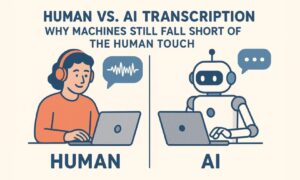Vending machines are a convenient way to quickly purchase snacks, drinks and other items on the go. These automated retail machines can be found just about everywhere – offices, schools, transit stations and more. But where did vending machines come from and how do they work? Read on to learn about the fascinating history and future innovations of vending machines.
A Brief History of Vending Machines
The first vending machines appeared thousands of years ago. In Ancient Greece and Rome, coin operated machines dispensed holy water at temples. The first modern coin operated vending machines emerged in the late 19th century selling postcards and chewing gum.
By the early 20th century, vending machines started selling chocolate, cigarettes and other consumer goods. The 1920s brought the first cold drink machines that kept sodas chilled and ready for purchase. Mid-century vending machines became more mainstream, providing snacks and refreshments in offices, schools and public locations across America.
Recent innovations include machines accepting credit/debit cards and mobile payments, interactive touch screens, and fresh, healthy vending options.
How Do Vending Machines Actually Work?
While vending machine designs vary, most contain these core components:
- Money processing – This system accepts and validates coins, paper bills and provides change.
- Product storage – Snacks, drinks and other items are neatly stacked in columns within the machine.
- Control unit – An internal computer that processes payments and operates the dispensing mechanism.
- Sensors – Track inventory levels and report malfunctions.
- Dispensing mechanism – Spirals or conveyor belts rotate upon selection to deliver an item which then drops into the collection tray.
Some vending machines also contain features like refrigeration, video screens, telemetry systems and apps for making custom orders.
Major Vending Machine Companies
Several large companies manufacture vending machines or operate networks of them:
- Crane, Canteen and Compass are top vending machine producers.
- Food service giants like Aramark, Sodexo and Compass Group are major vending machine operators.
- The U.S. vending machine industry generates around $25 billion in sales annually.
- Cold beverages account for 45% of vending machine sales. Snacks are around 20%, hot drinks 15% and other items 20%.
Use Cases and Benefits of Vending Machines
Vending machines offer many advantages that make them a ubiquitous retail channel:
- Convenience – Quick, 24/7 automated access to snacks and drinks. No waiting in line.
- Efficiency – Vending provides items on demand without dedicated staffing.
- Captive Audiences – Airports, gas stations, hotels and other locations where people dwell are perfect spots for vending.
- High Traffic – Transit centers, convention halls and schools are ideal high volume vending locations.
- Branding – Companies use custom branded machines to promote their products.
The Future of Vending Machines
Vending machines continue to adopt new technologies and expand offerings:
- Improved Customer Experiences – Touchscreens, mobile payments and interactive options enhance convenience.
- Increased Connectivity – Real time data guides stocking and enables remote monitoring.
- Healthy Options – Nutritious snacks, real fruit, custom made meals and more are now vending machine fare.
- Cashless Payments – Credit cards and mobile pay apps are reducing cash purchases.
- Targeted Promotions – Digital displays and loyalty programs personalize offers.
- Potential Growth Areas – Hospitals, apartments, airports and other venues are adding vending.
Vending machines have come a long way since dispensing holy water in ancient times! With innovative features and healthy products, these automated retailers continue adapting to meet evolving customer needs. The future looks bright for the vending industry.



































